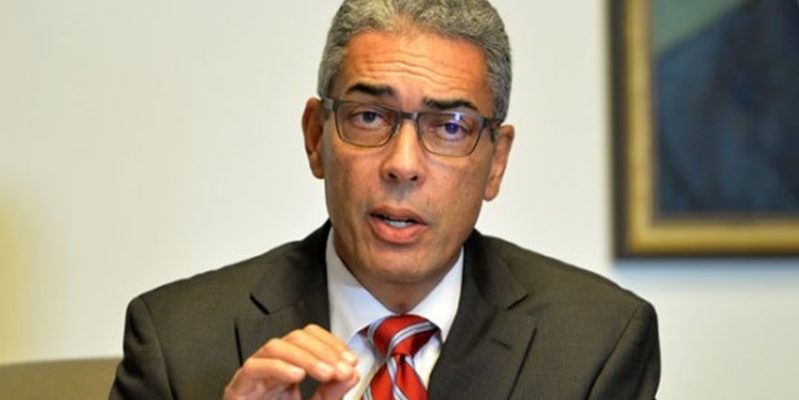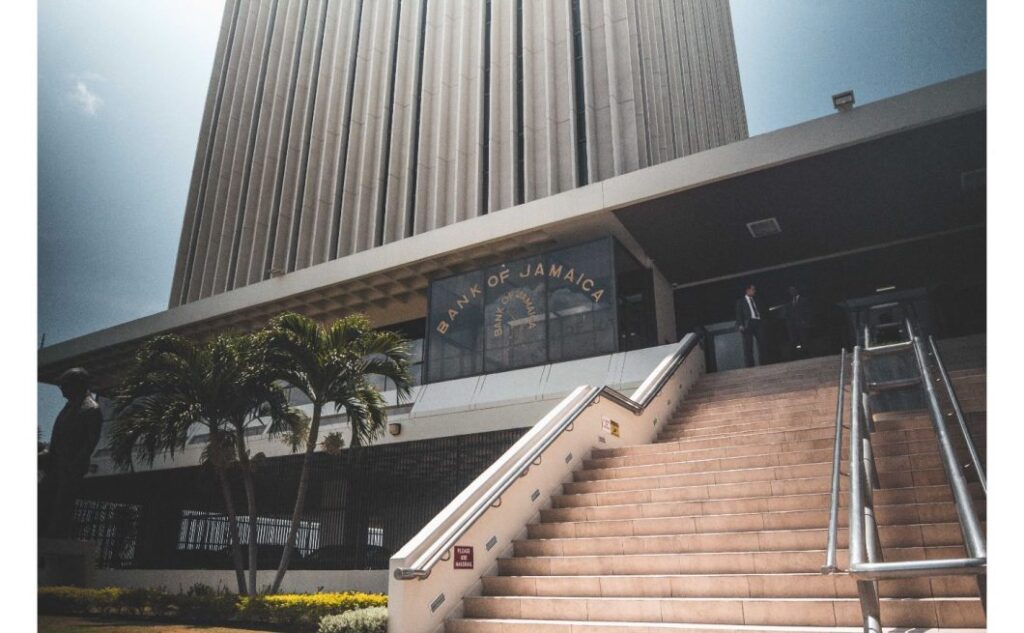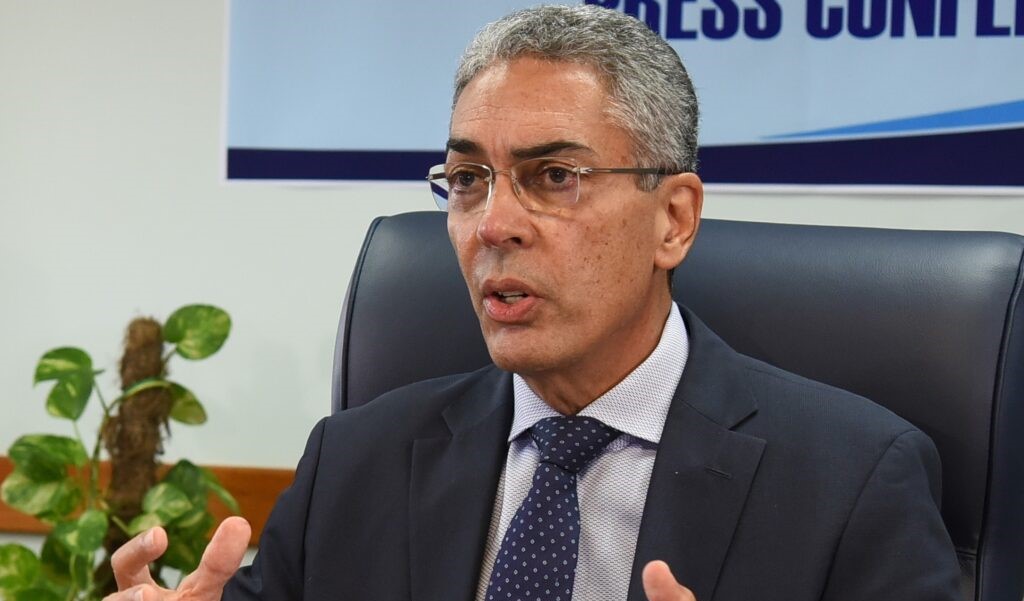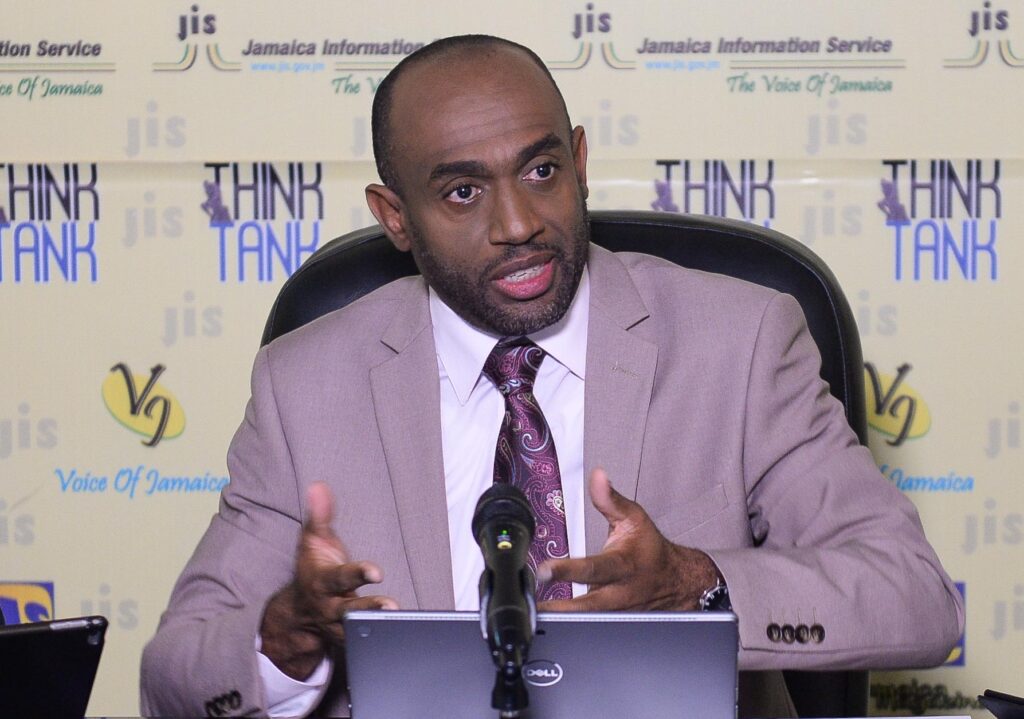

It would have been understandable for the Bank of Jamaica (BOJ) to be cautious and risk-averse keeping, the Monetary Policy Rate at 6.50 per cent. It could have taken the banker’s approach of belt and braces but chose to lower the rate to 6.25 thus doing its bit to spur the economy and send a signal to banks that they too should lower their rates, thus allowing for more capital to flow to businesses and spur greater consumption.
At a press briefing today at the Bank of Jamaica’s Nethersole Place headquarters in downtown Kingston, Governor Richard Byles explained the rationale behind the decision to lower the rate by 25 basis points. The BOJ has now lowered the policy rate by 75 basis points this year.
Governor of the BOJ, Richard Byles declared: “The decision to further ease monetary policy reflects the committee’s view that: (a) Following the temporary impact of Hurricane Beryl on prices, inflation is becoming more anchored in the Bank’s target range of 4.0 to 6.0 per cent and; (b) the inflation outlook has improved.

“However, in the context of some emerging uncertainties, the MPC also noted that future interest rate adjustments will of necessity, be gradual and will continue to depend on the incoming data.”
The impact of Hurricane Beryl on prices is expected to be temporary. The inflation rate has remained within the target range for some time now. The Statistical Institute of Jamaica (STATIN) reported that headline inflation at October 2024 was 4.9 per cent, which was lower than the 5.7 per cent at September 2024. This outturn was also lower than the bank’s most recent forecast and was within the bank’s target range. Core inflation was 4.5 per cent at October 2024, representing the sixteenth consecutive month that core inflation has been below 6.0 per cent.
Inflation is on a downward path and Byles expects it to be within the BOJ’s target range over the next two years.
He continued: “Both the change in the exchange rate and businesses’ expectations about the pace of depreciation in the future have remained fairly stable. The exchange rate has depreciated by 2.1 per cent on a year-over-year basis at 19 November 2024, which is a mild uptick when compared to the 1.1 per cent depreciation for the same period a year earlier.”

There has been some concern surrounding foreign exchange as the Jamaican dollar creeps closer to J$160 to US$1. Over the last week, the BOJ has intervened with a US$90 million jolt to prop up the local dollar. Deputy Governor of the Bank of Jamaica Dr Wayne Robinson said at today’s briefing that the Central Bank does not cleave to the dreaded $1.60 figure and is more concerned about foreign exchange stability. The BOJ has intervened more in the foreign exchange market this year than it did last year.
Byles explained: “The foreign exchange market has been adequately supported by the bank’s use of its foreign reserves to augment flows in the market. BOJ sold over US$1.0 billion via its B-FXITT facility over the 12 months to end October 2024, compared to US$947 million sold over the similar 12 months to end October 2023.

“However it is important to note that the ankb net purchased approximately US$1.2 billion over the 12 months period to October 2024, which in part, resulted in the gross reserves increasing to US$5.7 billion at the end of October 2024. The Bank is committed to ensuring that the foreign exchange market remains stable.
“Demand in the economy continues to moderate. Some of this is the result of the bank’s past monetary policy decisions to reduce inflation. However, the shock to the Jamaican economy from Hurricane Beryl has also significantly slowed growth. The economy is estimated by the PIOJ to have contracted by 2.8 per cent for the September 2024 quarter, in contrast to the growth of 0.2 per cent recorded for the June 2024 quarter. The decline mainly reflected contractions in domestic crop production and in the mining sector, due to the hurricane. For the December quarter, the economy is estimated to contract within the range of -1.0 to 0.0 per cent.”

We live in turbulent times with a war in Europe and serious conflicts in the Middle East. Only last week, Russia’s President Putin threatened to deploy nuclear weapons against Ukraine if it continues to use US-made weaponry to fire upon Russia. Iran has also said it will be seeking retribution for Israel’s strikes on its territory and for how it has dismantled Hezbollah. It is less than three years since the world recovered from the COVID pandemic and it may very well be plunged into war and turmoil which will undermine economic growth. Jamaica is a small, open economy and it will be impacted by events it has nothing to do with. Already it is paying around US$2 billion for imported fuel and another US$2 billion for imported food. Both the US and Canada have issued a Travel Advisory on Jamaica which will reduce tourists arrivals. Remittances are marginally down on last year’s figure as inflation in Diaspora markets, though abating, has been biting workers over the last few years.

So what can we look forward to? What brings the year ahead?
“The balance of risks to the inflation forecast are skewed to the upside. There is increased uncertainty related to potential economic policy changes among Jamaica’s main trading partners, which could have adverse implications for investment and remittance inflows as well as inflation expectations. Higher inflation could also result from further escalation in geopolitical tensions, which could adversely impact international supply chains.
“Worse-than-anticipated weather conditions in Jamaica could also influence higher inflation. While information suggests that private sector wage increases have stabilised at their pre-COVID rate, there have been emerging reports of labour market pressures in particular sectors. On the downside, lower-than-projected domestic demand could influence lower inflation,” said Byles.
Governor Byles concluded: “For Financial Year 2024/25, the BOJ projects that the change in real economic activity will fall in the range of -1.0 to 0.5 per cent while real GDP for Financial Year 2025/26 is projected to grow by between 1.0 and 3.0 per cent. The projection for Financial Year 2024/25 largely reflects the anticipated adverse impact of Hurricane Beryl on the economy and is underpinned by contractions for Agriculture, Forestry & Fishing and Construction. The outlook for Financial Year 2025/26 reflects the view that there will be a fairly rapid rebound in economic activity following declines in Financial Year 2024/25.”







Comments